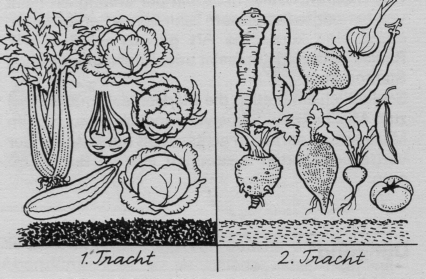 In addition to the compatibility of the individual types of vegetables with each other, the different demands on the humus supply also play a decisive role when setting up a crop rotation.
In addition to the compatibility of the individual types of vegetables with each other, the different demands on the humus supply also play a decisive role when setting up a crop rotation.
Although most types of vegetables make more or less high demands on the humus supply, they react quite differently to fresh organic fertilization. Then you can divide the vegetables into two groups. The first group includes all species, that need fresh organic fertilizer or use it well. This includes cauliflower, Broccoli, head cabbage, Brussels sprouts, leek, Saddlery, Cucumber, pumpkin, Melons, Mangold, rhubarb, Asparagus and Sweetcorn. The second group includes all other species, do not necessarily need the fresh organic fertilizer, sometimes even sensitive to it. Accordingly, the vegetable land is conveniently divided into two halves. One receives a strong humus gift, the other is limed. The area supplied with fresh humus is referred to as being in 1st crop, the other face is in 2. try.
Are the strawberries included in the vegetable crop rotation?, which is definitely recommended, then there is a tripartite division of the vegetable land.